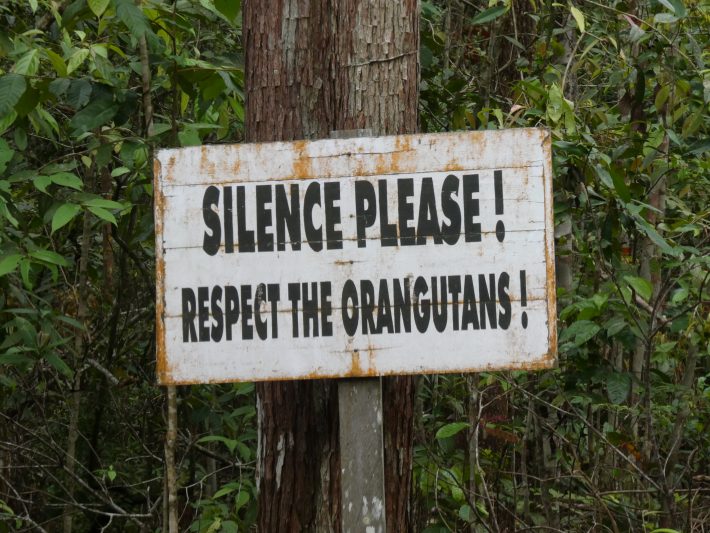Closer scientific collaboration needed to save orangutan, say leading experts
Brunel University London press release.
Scientists studying animal and human populations in Borneo must work together more closely if they’re to save the orangutan, according to leading conservation and social science researchers in a new People and Nature article.

Writing in the British Ecological Society’s journal People and Nature, the researchers seek to improve the relationship between conservationists and social scientists, and encourages them to engage with each other in ‘equal, mutually respectful, yet constructively critical ways.”
“In the popular imagination, conservation is often viewed as a project of saving particular animal species and landscapes. But the reality is that people also live in these landscapes and alongside these species,” said Dr Liana Chua, a reader in social anthropology at Brunel University London, who co-authored the article alongside 13 international colleagues.
“If conservation is to work, it can’t afford to ignore those human dimensions – it needs to take seriously people’s values, concerns, social relations, livelihoods, and so on. Many conservationists have natural science backgrounds and may not be well equipped to deal with these social complications. This is where it is important for them to work with social scientists, who can not only provide contextual knowledge about the human dimensions of conservation, but can also push conservationists to reflect on and transform their own models and practices.”
To assist greater collaboration, the researchers back a number of strategies, including strategically using proxies in conservation policy and practice, and shared spaces for conservationists and social scientists to work alongside each other.
The researchers point to studies which show that villages living in proximity to orangutans in Borneo and Sumatra often prioritise other issues such as clean water, medical care and family over the plight of their neighbouring primates. Where conservationists may commonly respond by advocating educational programmes, social scientists may instead recommend shifting the focus away from orangutans towards another animal, such as fish – animal’s which broadly benefit from the preservation of the same eco-system as the orangutan, but which are more important to local human populations.
“In some conservation circles, social sciences are still perceived as ‘soft’ subject that are less rigorous or scientifically valid than ‘hard’, quantitative natural science disciplines
said Dr Chua.
“This has led to some conservationists either dismissing social scientific methods and insights or selectively co-opting them in order to further existing conservation aims.
“On the other hand, there’s a strong social scientific tradition of only criticising conservation and conservationists for the problems they cause – e.g. displacing people from their lands, creating new social and political conflicts, and perpetuating economic inequalities. This has led to a reluctance among some social scientists to collaborate with people whom they sometimes treat as ‘the bad guys’. Luckily there are people in both fields who are working to overcome those barriers!”
To encourage greater collaboration, Dr Chua said that a number of structural barriers will need to be brought down, with funding bodies and institutions needing to do more to support interdisciplinary research project.
“I hope that our recently published article will serve as a concrete example of how conservationists and social scientists can work, think, and write together – not just in the field, but also at the level of analysis and project design,” said Dr Chua.
This article can be read for free here:
https://besjournals.onlinelibrary.wiley.com/doi/abs/10.1002/pan3.10072
Media Contacts:
Tim Pilgrim, Media Relations
+44 (0)1895 268965
tim.pilgrim@brunel.ac.uk
Like what we stand for?
Support our mission and help develop the next generation of ecologists by donating to the British Ecological Society.